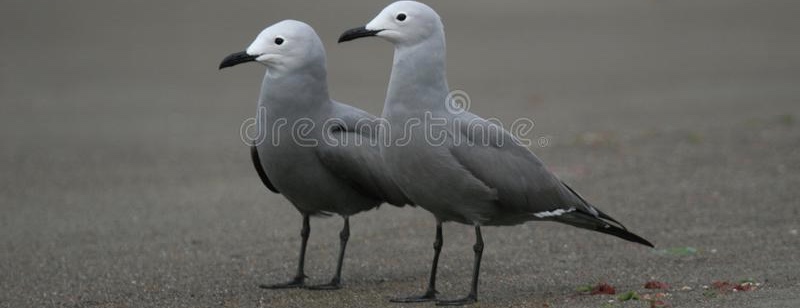ANIMAL: Gray/Grey Gull Leucophaeus modestus Type of Animal: Gull/Tern Habitat: Sandy beaches, mudflats, desert, river mouths, rocky coasts, flat coastal plains covered w/ small rocks, coastal areas Location(s): Pacific coast of C & S America from Costa Rica to Chile. Breeds in Chile’s Atacama Desert as well as occasionally in coastal areas. Vagrant in Falkland Islands, South Georgia Island, South Sandwich Islands, Brazil, & Mexico. Appearance: Gray body/wings-dorsal surface darker than ventral region, black flight feathers, inner primaries/secondaries have white tips, tail has black band w/ white trailing edge, black legs/slender bill, brown iris, white head in summer, brownish-gray head in winter Food/Diet: Small crabs, fish, carrion, refuse, offal, worms, rodents, eggs, birds, insects, insect larvae, amphibians, reptiles, fruit, seeds Status in Wild: Stable Conservation: Breeding in zoos, aquariums, & wildlife parks Lifestyle: Breeding colonies number 100-24,000 birds. Feeding/foraging flocks quite large, easily numbering in hundreds or thousands. Additional Info: Called: Male: Cock Female: Hen Young: Chick Group: Colony Weight: 13-14 oz Gestation: 1 month Life Span: 10-20 years Height: 1.5 ft Body Length: 1.5 ft Tail Length: 1 in Main predators are raptors, dogs, cats, foxes, & sea lions. Also called Garuma Gull. Nests usually found in sand scrapes & near rocks. Females lay 1-3 eggs & when eggs hatch, parents take turns making round trips to sea to bring food/water. Communicate w/ yelping “kyow”, growled rising “grrraaahh,” & low moans/shrill cries. Partially nocturnal in nesting season. Nest site approval shown by both partners displaying w/ head close to ground mimicking regurgitation. Sexually mature at around 2 years old, which is when adult plumage comes in. Chicks typically fledge at 5 weeks old. Breed between November & January. Egg shells thick due to dry environment they’re laid in. Fun Fact(s): Breeding grounds of this species only discovered in 1945 due to remoteness. Have largest eyes of any gull.

